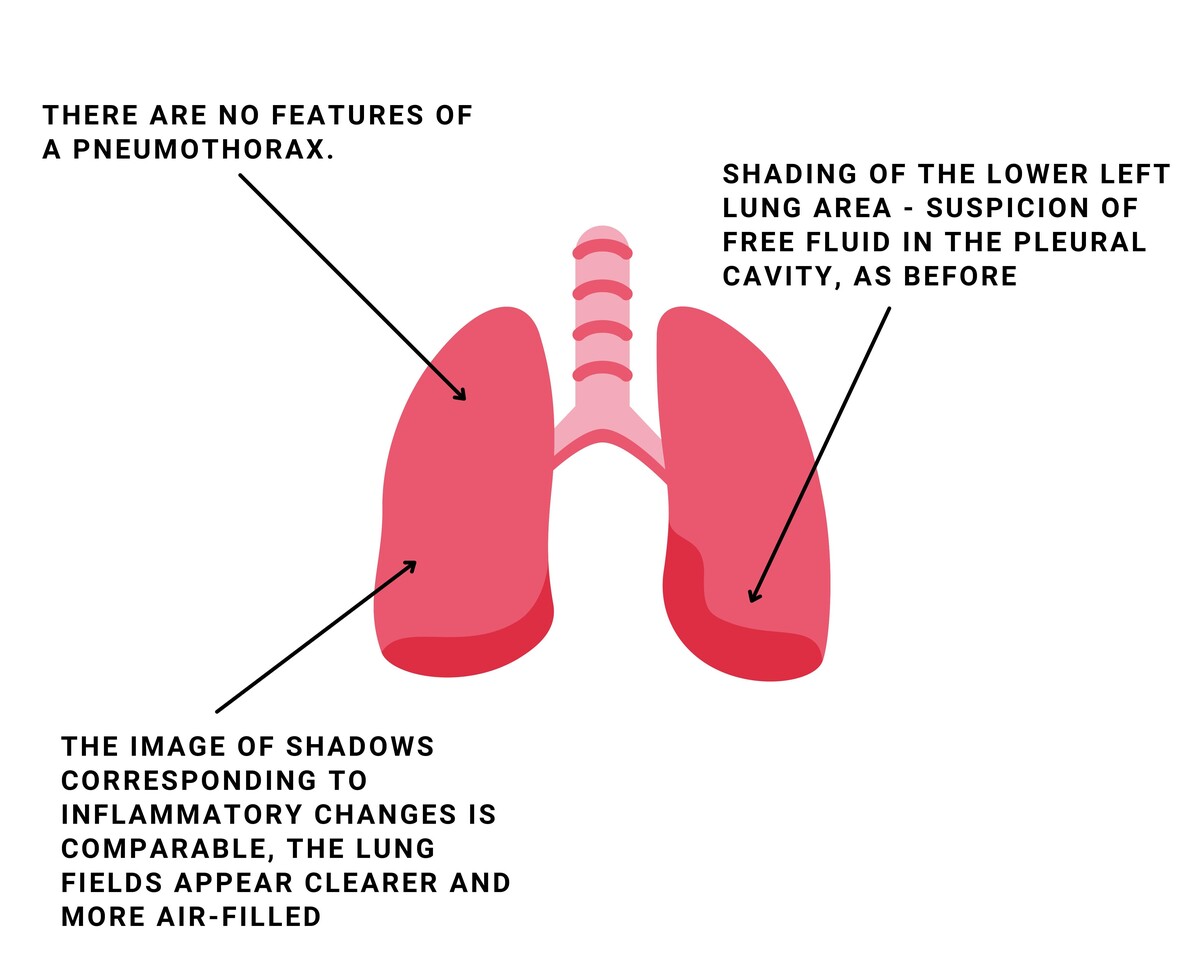CASE REPORT
Acinetobacter baumannii Ventilator-Associated Pneumonia in critically ill patient with COVID-19 – Case Report and literature review
1
Student Scientific Club of 2nd Department of Anaesthesiology and Intensive Care, Medical University, Lublin, Poland
2
2nd Department of Anaesthesiology and Intensive Care, Medical University, Lublin, Poland
Corresponding author
Julia Siek
Student Scientific Club of 2nd Department of Anaesthesiology and Intensive Care, Medical University, Lublin, Poland
Student Scientific Club of 2nd Department of Anaesthesiology and Intensive Care, Medical University, Lublin, Poland
Med Srod. 2023;26(3-4):119-124
KEYWORDS
TOPICS
ABSTRACT
The onset of the COVID-19 pandemic originated from the city of Wuhan, the capital of Hubei province in central China. From there, the virus spread rapidly around the world. The World Health Organization (WHO) declared a pandemic on 11 March 2020. The COVID-19 pandemic has severely overburdened healthcare systems and led to huge economic losses. The rapid spread of the virus and the huge number of deaths meant that the need for sensitive, fast and accurate diagnostic technologies increased at this time. The main challenge facing the health service is the detection of asymptomatic cases, which are spreading rapidly in everyday interpersonal contacts. The virus is most commonly spread by droplets. The average incubation period is about 6.4 days. Characteristic symptoms among infected people include: fever, cough, shortness of breath, muscle pain or fatigue. SARS-CoV-2 infection can occur with varying intensity: asymptomatic, mild to moderate cases, severe cases, critical cases, and death. Patients with severe COVID-19 usually require endotracheal intubation and mechanical ventilation due to worsening respiratory failure. As a result of too long mechanical ventilation, bacterial infection often occurs, which can be fatal. The case report presents the causes of ventilator-associated pneumonia, and the risk of this complication in patients infected with COVID-19 based on a case report and literature review.
REFERENCES (23)
1.
Mahase E. Covid-19: most patients require mechanical ventilation in first 24 hours of critical care. BMJ. 2020 Mar 24;368:m1201. doi:10.1136/bmj.m1201.
2.
Puhach O, Meyer B, Eckerle I. SARS-CoV-2 viral load and shedding kinetics. Nat Rev Microbiol. 2023 Mar;21(3):147–161. doi:10.1038/s41579-022-00822-w.
3.
Muralidar S, Ambi SV, Sekaran S, et al. The emergence of COVID-19 as a global pandemic: Understanding the epidemiology, immune response and potential therapeutic targets of SARS-CoV-2. Biochimie. 2020 Dec;179:85–100. doi:10.1016/j.biochi.2020.09.018.
4.
Zhou S, Lv P, Li M, et al. SARS-CoV-2 E protein: Pathogenesis and potential therapeutic development. Biomed Pharmacother. 2023 Mar;159:114242. doi:10.1016/j.biopha.2023.114242.
5.
Lima WG, Brito JCM, da Cruz Nizer WS. Ventilator-associated pneumonia (VAP) caused by carbapenem-resistant Acinetobacter baumannii in patients with COVID-19: Two problems, one solution? Med Hypotheses. 2020 Nov;144:110139. doi:10.1016/j.mehy.2020.110139.
6.
Jiang Y, Ding Y, Wei Y, et al. Carbapenem-resistant Acinetobacter baumannii: A challenge in the intensive care unit. Front Microbiol. 2022 Nov 10;13:1045206. doi:10.3389/fmicb.2022.1045206.
7.
Wicky PH, Niedermann MS, Timsit JF. Ventilator-associated pneumonia in the era of COVID-19 pandemic: How common and what is the impact? Crit Care. 2021 Apr 21;25(1):153. doi:10.1186/s13054-021-03571-z.
8.
Bartal C, Rolston KVI, Nesher L. Carbapenem-resistant Acinetobacter baumannii: Colonization, Infection and Current Treatment Options. Infect Dis Ther. 2022 Apr;11(2):683–694. doi:10.1007/s40121-022-00597-w.
9.
Maes M, Higginson E, Pereira-Dias J, et al. Ventilator-associated pneumonia in critically ill patients with COVID-19. Crit Care. 2021 Jan 11;25(1):25. doi:10.1186/s13054-021-03460-5.
10.
Huang Y, Zhou Q, Wang W, et al. Acinetobacter baumannii Ventilator-Associated Pneumonia: Clinical Efficacy of Combined Antimicrobial Therapy and in vitro Drug Sensitivity Test Results. Front Pharmacol. 2019 Feb 13;10:92. doi:10.3389/fphar.2019.00092.
11.
Ayoub Moubareck C, Hammoudi Halat D. Insights into Acinetobacter baumannii: A Review of Microbiological, Virulence, and Resistance Traits in a Threatening Nosocomial Pathogen. Antibiotics (Basel). 2020 Mar 12;9(3):119. doi:10.3390/antibiotics9030119.
12.
Yüce M, Filiztekin E, Özkaya KG. COVID-19 diagnosis – A review of current methods. Biosens Bioelectron. 2021 Jan 15;172:112752. doi:10.1016/j.bios.2020.112752.
13.
Harding CM, Hennon SW, Feldman MF. Uncovering the mechanisms of Acinetobacter baumannii virulence. Nat Rev Microbiol. 2018 Feb;16(2):91–102. doi:10.1038/nrmicro.2017.148.
14.
Lee CR, Lee JH, Park M, et al. Biology of Acinetobacter baumannii: Pathogenesis, Antibiotic Resistance Mechanisms, and Prospective Treatment Options. Front Cell Infect Microbiol. 2017 Mar 13;7:55. doi:10.3389/fcimb.2017.00055.
15.
Mea HJ, Yong PVC, Wong EH. An overview of Acinetobacter baumannii pathogenesis: Motility, adherence and biofilm formation. Microbiol Res. 2021 Jun;247:126722. doi:10.1016/j.micres.2021.126722.
16.
Xiao T, Guo Q, Zhou Y, et al. Comparative Respiratory Tract Microbiome Between Carbapenem-Resistant Acinetobacter baumannii Colonization and Ventilator Associated Pneumonia. Front Microbiol. 2022 Mar 4;13:782210. doi:10.3389/fmicb.2022.782210.
17.
Fernandes Q, Inchakalody VP, Merhi M, et al. Emerging COVID-19 variants and their impact on SARS-CoV-2 diagnosis, therapeutics and vaccines. Ann Med. 2022 Dec;54(1):524–540. doi:10.1080/07853890.2022.2031274.
18.
Maniruzzaman M, Islam MM, Ali MH, et al. COVID-19 diagnostic methods in developing countries. Environ Sci Pollut Res Int. 2022 Jul;29(34):51384–51397. doi:10.1007/s11356-022-21041-z.
19.
Ciotti M, Benedetti F, Zella D, et al. SARS-CoV-2 Infection and the COVID-19 Pandemic Emergency: The Importance of Diagnostic Methods. Chemotherapy. 2021;66(1–2):17–23. doi:10.1159/000515343.
20.
Menga LS, Berardi C, Ruggiero E, et al. Noninvasive respiratory support for acute respiratory failure due to COVID-19. Curr Opin Crit Care. 2022 Feb 1;28(1):25–50. doi:10.1097/MCC.0000000000000902.
21.
Lentz S, Roginski MA, Montrief T, et al. Initial emergency department mechanical ventilation strategies for COVID-19 hypoxemic respiratory failure and ARDS. Am J Emerg Med. 2020 Oct;38(10):2194–2202. doi:10.1016/j.ajem.2020.06.082.
22.
Elrobaa IH, New KJ. COVID-19: Pulmonary and Extra Pulmonary Manifestations. Front Public Health. 2021 Sep 28;9:711616. doi:10.3389/fpubh.2021.711616.
23.
Kevadiya BD, Machhi J, Herskovitz J, et al. Diagnostics for SARS-CoV-2 infections. Nat Mater. 2021 May;20(5):593–605. doi:10.1038/s41563-020-00906-z.
Share
RELATED ARTICLE
We process personal data collected when visiting the website. The function of obtaining information about users and their behavior is carried out by voluntarily entered information in forms and saving cookies in end devices. Data, including cookies, are used to provide services, improve the user experience and to analyze the traffic in accordance with the Privacy policy. Data are also collected and processed by Google Analytics tool (more).
You can change cookies settings in your browser. Restricted use of cookies in the browser configuration may affect some functionalities of the website.
You can change cookies settings in your browser. Restricted use of cookies in the browser configuration may affect some functionalities of the website.



